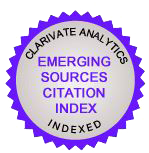On Dostoevsky’s Shoelaces and the Vicissitudes of Literary History
Keywords:
Maurice Baring, Dmitry Svyatopolk-Mirsky, Fyodor Dostoevsky, English reception of Russian literature, Twentieth-century literary criticismAbstract
The article relates broadly to the English reception of Russian literature at the beginning of the twentieth century, and to the friendship between celebrated representatives of two generations of intermediaries and historians of Russian literature for the English, Maurice Baring and Dmitry Svyatopolk-Mirsky. More specifically it focuses on Baring’s recollection of an encounter in 1907 during which the young Mirsky allegedly expressed his passionate admiration for Dostoevsky and declared Tolstoy unworthy to untie Dostoevsky’s shoelaces. Baring’s own high regard for Dostoevsky had been manifest years before the Dostoevsky “craze” swept England in the teens of the century. Mirsky’s celebrity dates from the 1920s when, after Revolution and Civil War and aided by Baring, he lived in emigration in London, earning renown as author of arguably the finest history of Russian literature ever written for the English reader. However, Mirsky’s consistent opinion of Dostoevsky and his assessment of the relative eminence of Dostoevsky and Tolstoy in the writings of those years, far from cementing a bond with Baring, seem almost diametrically opposed to the latter’s recollection of their first encounter some 15 years before. Nevertheless, traces of the lost Dostoevskyphile youth of Mirsky offer tentative vindication of Baring’s version. At the same time, though alien to the works by which Mirsky is best known, the exalted tenor of the surviving piece of juvenilia points obliquely ahead. It is macabrely suggestive of the expression of Mirsky’s growing Marxist and Leninist certainty from the late 1920s on, and of the faith or vision that in the 1930s took him back to the Soviet Union and his death.Downloads
Downloads
Published
How to Cite
Issue
Section
License

CC BY-SA: This license allows reusers to distribute, remix, adapt, and build upon the material in any medium or format, so long as attribution is given to the creator. The license allows for commercial use. If you remix, adapt, or build upon the material, you must license the modified material under identical terms.
CC BY-SA includes the following elements:
BY ![]() – Credit must be given to the creator
– Credit must be given to the creator
SA ![]() – Adaptations must be shared under the same terms
– Adaptations must be shared under the same terms
Authors who publish with this journal agree to the following terms:
1. Authors retain copyright and grant the journal right of first publication with the work simultaneously licensed under a Creative Commons Attribution License that allows others to share the work with an acknowledgement of the work's authorship and initial publication in this journal.
2. Authors are able to enter into separate, additional contractual arrangements for the non-exclusive distribution of the journal's published version of the work (e.g., post it to an institutional repository or publish it in a book), with an acknowledgement of its initial publication in this journal.
3. Authors are permitted and encouraged to post their work online (e.g., in institutional repositories or on their website) prior to and during the submission process, as it can lead to productive exchanges, as well as earlier and greater citation of published work (See The Effect of Open Access).












